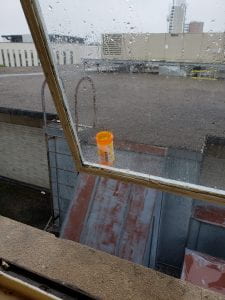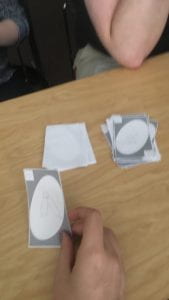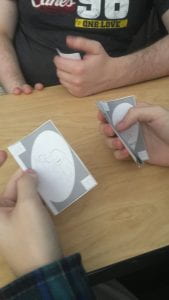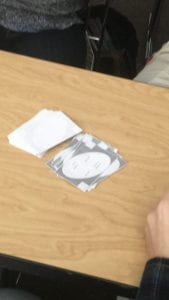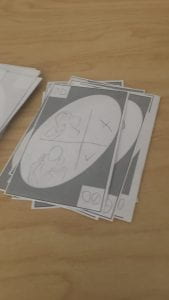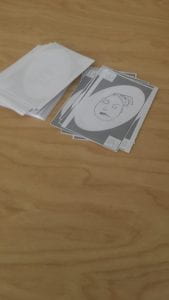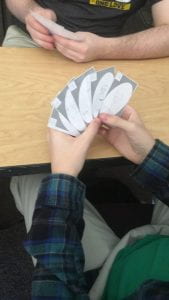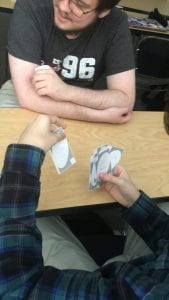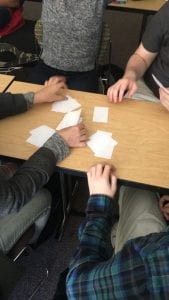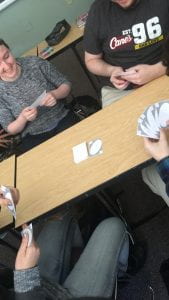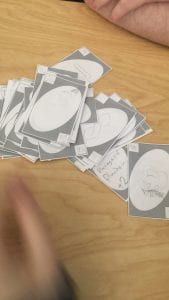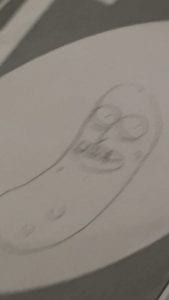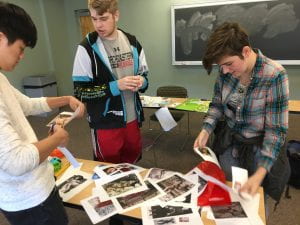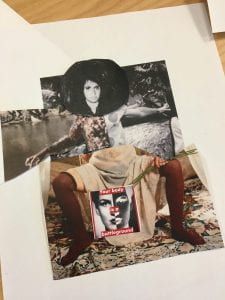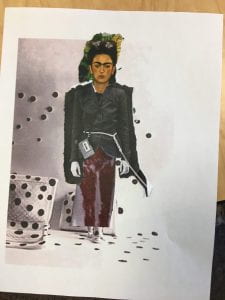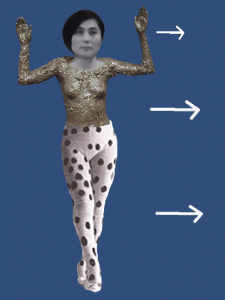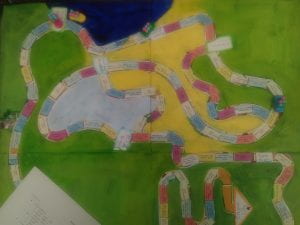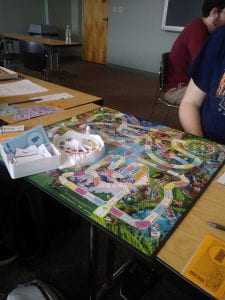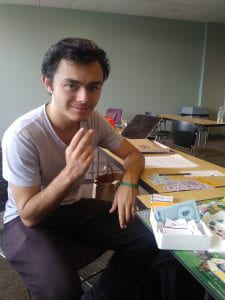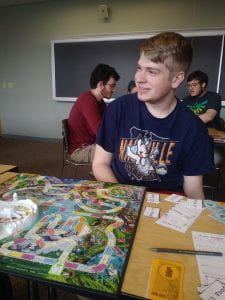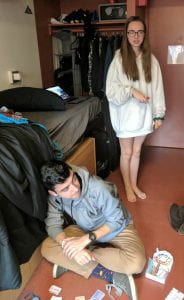Materials:
- Two bowls of Go stones
- A dry-erase game board with targets of any number of rings (depending on desired difficulty)
Artist Statement:
For this assignment, I decided to appropriate the stones and bowls from a classic strategy board-game that predates even chess known as Go. The game board used was the underside of a dry-erase board from a board-game making kit that I’m using for another game in another class.
My goal for this project was to create a short, simple, fun game that retained some of the sensory experiences of its components. Carom alone is the result of decades of play and refinement, while Go is largely considered to be the ultimate strategy game, focused on knowing the mind of the opponent, the sensory and aesthetic experience of playing the game itself, and the creation of a celestial landscape that mirrors the universe itself through the regular procedure of play.
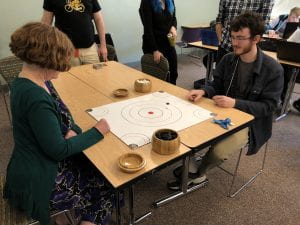
I was pleasantly surprised during play to find that the sensory and aesthetic appeal of both games was retained in this hybrid. Flicking a stone just hard enough for it to land in the perfect spot, knocking your opponent’s stones off of an advantageous position, or even just feeling the the stones click against each other as you reach in the bowl are all experiences that coalesce into a delightful amalgam of the sensory impact afforded by both games.
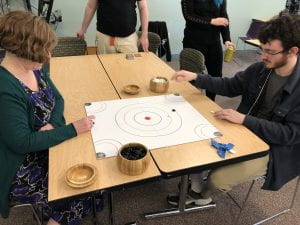
The original idea for this piece was inspired by Maciunas’ Fluxkits, whereby each item contained within served some aesthetic purpose as a set-piece for preservation and interaction. As such, I had meant to find an adequately appealing game board and some other items that would enhance the experience, but I ended up settling for the dry-erase stand-in from my other game. In doing so, I decided not to place the entire thing in a box or case as it might have been confusing to make sense of these disparate pieces on one’s own. The end result manages to feel like what a Saudi Arabian boy (Carrom is popular in Saudi Arabia, where I was born and raised) might think of doing with a set Go stones he’s never seen before.

